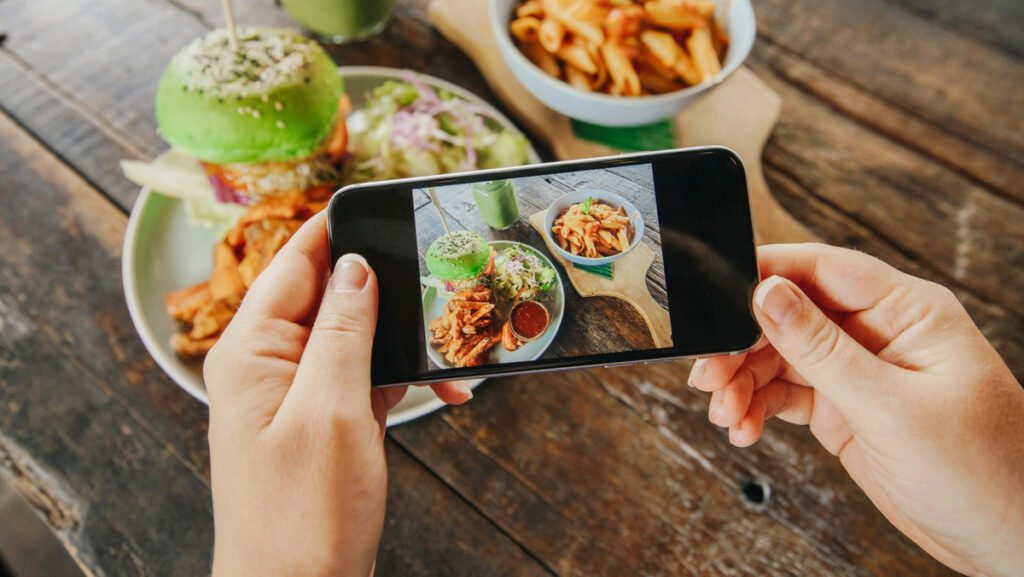The world of gastronomy has long gone beyond restaurants and kitchens. Today the dishes live in Instagram, TikTok and on delivery sites, where the first seconds decide whether the order will be placed or the user will just scroll through further. In this reality photo and video for food: how to" sell " taste through the screen is not just a visual design, but a full-fledged dialogue with the future buyer. A single frame may determine whether a person enters the store or adds an item to the shopping cart.
Visual hunger: why the image solves the problem
Food is one of the few objects whose appeal is felt before the first bite. Juicy served pasta, glossy glaze, steam over a cup of ramen — all this can cause a reaction literally at the level of instincts. People "eat with their eyes" even before they make a purchase decision.
In the era of digital storefronts, photos and videos have become the point of first contact. The image quality affects not just the perception of the dish, but the overall impression of the brand. A photo can convey the warmth of a home-made breakfast, the atmosphere of a gastro bar, or the premium quality of author's cuisine-all without a single word.
How food begins to speak: light, texture, composition
The most delicious burger in the world can look boring and flat if photographed in poor light conditions. But a well-chosen soft side light will emphasize the textures, highlight the roasting, reveal the colors of the bun and the freshness of the greens.
Composition plays an equally important role. Alignment, depth of field, accents-all this directs the eye and creates the desired feeling. Will you want to reach out to the screen and take a piece? This is the question that a photographer should always face.
When shooting video it is important not only to show the dish, but also to convey the movement, aroma, and sound. Slowly stretching cheese, sizzling in a pan, pouring sauce — all these details seem to trigger the mechanism of memory and taste associations. In the short clip, the food comes to life, becomes real, almost tangible.

Preparing a dish for shooting: cooking for the sake of the frame
What's good on a plate won't always look appealing on the screen. Therefore, adjustments are often made for shooting: more saturated colors, emphasized textures, additional gloss. This is not cheating, but creating a visual story where the dish looks at its best.
Special attention is paid to details: perfectly sliced ingredients, clean serving, no stains on the plate. Each element of the composition should work for the overall feeling of appetizing.
For the video, not only the dish itself is filmed, but also the cooking process. People are interested in watching how food is born: from the bookmark of ingredients to the final touch of the chef. This creates trust, generates interest, and encourages you to take action — for example, click "order".
Photos and videos for food: how to" sell " the taste through the screen in different formats
Visual content works differently depending on the platform. For Instagram, aesthetics, palette, and a unified style are important. TikTok and Reels feature dynamic, immersive editing and the "I want it right now" effect. On the delivery site, the food should be as plausible as possible in order to meet the user's expectations.
Content is created with a specific goal in mind. It's one thing to attract a subscriber, but it's another to convince a person to place an order within a minute. Somewhere there is a show, somewhere-an honest demonstration "as is". The main thing is to maintain harmony between visual appeal and reality.
Team and process: when everyone is in their own place
Creating visual content for food is the result of well-coordinated work. It can include a food stylist, photographer or cameraman, cook, or marketer. It is important that everyone understands what message the dish carries and what emotion the image should evoke.
Work on shooting starts long before you click the button. First, a concept is selected: cozy home-made food or trendy gastronomy, street style or refined presentation. Then the scenery, angles, dishes, and background are thought out.
And, of course, it doesn't end there. Photo editing, color correction, video editing, music selection — all these are the final touches that make the result complete and expressive.
Trust through the screen: More than just a picture
Good visual content inspires trust. If the photo looks lively and appetizing, the person tends to believe that in reality everything will be just like that. This means that they are more likely to place an order, come to a cafe, or share a picture with friends.
Photos and videos for food: how to" sell " taste through the screen-this is the art of evoking emotions. This is a way to tell the story of a dish, convey care, show the atmosphere. After all, taste is not just about the receptors. This is about the sensations that begin long before the first bite.








